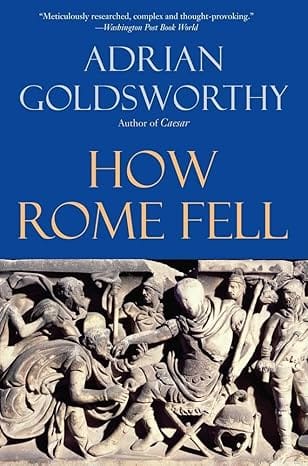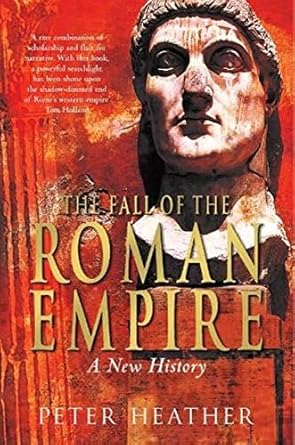The Long View: The Last Division: A History of Berlin 1945-1989

While Kennedy did say something that could have been seen as funny in his famous Berlin speech, if you watch video of the speech it is pretty clear the crowd didn't take it that way.
I have a number of personal connections to Berlin that make this review interesting to me. As a child, I met a friend of my father's who had escaped from East Germany. Also my wife's grandmother was a native of Berlin who met her US Army husband because of the garrisons there.
The Last Division: A History of Berlin 1945-1989
by Ann Tusa
Addison-Wesley
Publication Date May 1, 1997
ISBN: 0-201-14399-2
I Am a Doughnut
The problem with the Cold War was not so much that it threatened to go on forever as that it was so godawful boring. Year after year there were indistinguishable stories about unsatisfactory arms control negotiations, proxy guerrilla wars in places you never heard of and speculation about the health of the old hacks who ran the shabby but durable Soviet Empire. The frozen ninth circle of international tedium was, of course, Berlin. There the confrontation between East and West was most direct and the web of explicit agreements and insoluble differences was thickest. In literature, the Berlin espionage industry became a familiar metaphor for the ambiguous nature of the human condition, or something. Metaphorical treatment was necessary, perhaps, since thinking about the status and future of the divided city itself was likely to produce unconsciousness in anyone who did not actually work for the Brookings Institute. Just as the sudden fall of the Berlin Wall was unimaginable even a few months before it happened, so it may seem unimaginable that there could be either pleasure or profit in a history of how the Wall got there and how the city lived with it for 28 years.
Ann Tusa, co-author of two other books on postwar German subjects, has done the unimaginable. “The Last Division” is a serious, detailed and vastly entertaining history of the city of Berlin from its largely ruined state in 1945 to that wonderful street party that erupted on the night of November 9, 1989. The story concentrates on the 1950s and the events that precipitated the building of the Wall in 1961. We get only a cursory glance at West German Chancellor Willy Brandt’s “Oestpolitik” that resulted in 1971 in a Four Power agreement on the status of the city. President Kennedy’s 1963 visit is mentioned primarily to note that his famous line, “Ich bin ein Berliner,” idiomatically means “I am a doughnut.” Still, the book gives us a perceptive look at the key personalities of mid-twentieth century European history and a somewhat disconcerting introduction to the mechanics of diplomacy at the summit.
The story as told here rightfully ignores a lot of revisionist nonsense. It is, for instance, refreshing to read an account of John Kennedy’s administration that assumes the president was preoccupied with matters other than Addison’s Disease and Marilyn Monroe’s panties. (It helps, perhaps, that the author is highly British.) The book concentrates as narrowly as possible on Berlin, but simply by being factual it leaves little doubt about who was responsible for the Cold War. The basic cause of the recurring Berlin crises from the Soviet blockade of 1948 to the closing of the interzonal border in 1961 was that the Western Allies had neglected to get an ironclad agreement from the Soviets at the end of World War II regarding the governance of the city. The wartime leaders had vaguely agreed that the Western allies would share in the occupation of the city with the Soviets. The Western leaders seemed to have assumed that questions of supply for their garrison forces and for the civilian population would look after themselves. They didn’t.
Whenever the Western powers disagreed with the Soviets over any of the growing list of unresolved questions regarding the occupation of Europe, they would find services to their part of the city disrupted and road links to the West either cut or subject to interminable delays. In the blockade of 1948-49, the Soviets seem to have actually intended to make the Western powers choose between maintaining a presence in Berlin and reconstituting a democratic Germany in the West. Since the blockade was answered with an airlift, the scariest moments in the years thereafter were those when the Russians threatened to interfere with air transport, too. For instance, the Russians made a fuss when high-flying jets began to replace low-flying turboprops on the Berlin routes. Ann Tusa crystallizes the atmosphere of these events for us with this memorable footnote:
“Someone in the British embassy in Bonn had the spiffing wheeze of sending Lord Mountbatten to Berlin in a high altitude Comet to see what the Russians would do about it. It was rather reminiscent of the old ‘Beyond the Fringe’ sketch in which a hapless young man is told by his commanding officer ‘The time has come for a meaningless sacrifice. We have chosen you’ -- and not at all the conventional treatment for the Chief of Imperial General Staff.”
Western leaders tried hard to accommodate understandable Russian insecurity. They tried the personal touch. They sometimes tried something akin to bribery. None of it worked. One-on-one summit meetings with Khrushchev by Macmillan, Eisenhower and Kennedy all demonstrated that humoring the Russians did not work. The effort often seemed to make things worse, if the threatening tone of Khrushchev’s rhetoric was any indication. (In a particularly colorful turn of phrase, Khrushchev once remarked to John McCloy that Kennedy would be the last president of the United States. What a character.)
Part of the problem was that the Russians were not motivated simply by insecurity. It was not at all obvious in those days, for one thing, that command economies could not outperform market economies. As long as economic development was a matter of concrete and steel production, the Soviet economy was actually doing pretty well, and the Soviets expected to be deferred to accordingly. A deeper difficulty, perhaps, was that the Russians did not understand how contractual relationships among equals work. There is an old saying that Russians play chess and Americans play poker. What happened in the course of the Cold War was that the Russians eventually forced everyone who dealt with them to play chess, too.
Throughout the 1950s, this meant that the small Western garrisons of indefensible West Berlin enacted a nerve-wracking kabuki play with their Eastern counterparts over interzonal cross-points and rights of inspection. Everyone, including the Russians, had a lively awareness of how the First World War had started, and neither side pressed too far. However, the fact was that the Russians were the ones who wanted the status of the city changed. In fact, what they really wanted was a Germany demilitarized and ruled by a confederal government with a guaranteed Communist component. In that case, the status of Berlin would have been unimportant to them. The least that they would settle for, however, was recognition of their satellite, the German Democratic Republic. In that case, a Berlin in which people could move freely between East and West was a threat. In over ten years of negotiations, no one seems to have put forward a proposal as simple as trading recognition of the East German regime for the security of West Berlin. In the event, however, that is exactly what happened.
The Wall itself went up because of a demographic crisis of the Communists own devising. Emigration from East Germany to the West, largely through Berlin, had been a trickle through most of the 1950s. Towards the end of the decade, however, the East German government pressed a collectivization program against both small industrial firms and small farms. They thus started to lose farmers and skilled workers in large numbers. Peasant opposition caused food shortages, making the East an even less desirable place to live. Additionally, in 1958, Khrushchev began issuing a series of ultimatums, or what sounded like ultimatums, which demanded that the German question be settled in a specified period of time. The deadline kept changing, but increasing numbers of reasonable East Germans concluded that they would much rather be elsewhere if the border were sealed. By the time barbed-wire preliminaries to the Wall were put up on a sleepy weekend in August 1961, the small Communist republic was losing over 2000 people a day.
The Western Allies were outraged, after a fashion. They were certainly surprised. All kinds of scenarios had been prepared against forceful measures by the Communist governments. Most of them were variations on the blockade of 1948, with the envisioned remedy a much larger airlift. The one possibility they had not considered was that the East Germans might just isolate West Berlin from East Berlin but leave access to the West more or less alone. While it is clear enough that Western leaders did not collude in the establishment of the Wall, nevertheless they were clearly relieved. The Wall solved the practical problems the Russians and East Germans had been having, though it was another ten years before Willy Brandt’s diplomacy gave the solution an acceptable legal formulation. Western leaders got a standing photo opportunity whenever they visited Germany. “This wall proves the failure of communism!” they could say for three decades as they posed in front of it. West Berliners, in contrast, had trouble believing that a power that could keep a large selection of their friends and relatives permanently locked away was altogether impotent.
If the Cold War was a chess game, the Communist government of East Germany lost it in a way that in fact closely paralleled many games of chess. A doomed player may have considerable freedom of movement and just as many pieces as the other side until quite late in the game. Then, quite suddenly, the player’s position will collapse. The sacrifice of major pieces may buy a little more time. Even then, however, the end can be hastened by a panicky blunder. All the eastern regimes were doomed by Gorbachev’s decision not to support them militarily against internal unrest. East Germany in particular clearly did not have long to last after Hungary opened its borders with Austria in September 1989, providing a route for so many East Germans to leave that basic services began to break down. However, the sudden fall of the Wall was an accident. On November 9, a hapless spokesman for the East German government read a roomful of reporters an incomplete draft of a new regulation that would have let East Berliners get visas to travel to the Western Zones. It sounded, inaccurately, like a declaration of unrestricted passage. Once the guards at one crossing point started letting people through, the interzonal border simply dissolved.
Today, of course, the East Germans are very grumpy about the way things turned out. They think that they did pretty well in the postwar years, given that all the Russians left them after exacting reparations with was “Walter Ulbricht [the first East German leader] and a few potatoes.” They had some accomplishments to their credit, they say, that the West Germans should have respected. Probably they have a point. Still, the division of one of the great cities of Europe was not to anyone’s benefit, least of all theirs. Once upon a time, as this book shows, it seemed that the outcome of world history would turn on what happened in Berlin. As things turned out, however, the division ended without war, without riot, without even a cathartic lynching. This is one history book with a happy ending.
This article originally appeared in the July/August 1997 issue of Culture Wars magazine.
Copyright © 1996 by John J. Reilly

The Last Division: A History Of Berlin, 1945-1989 By Ann Tusa



Comments ()